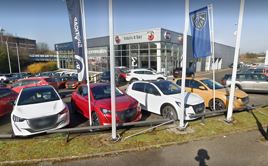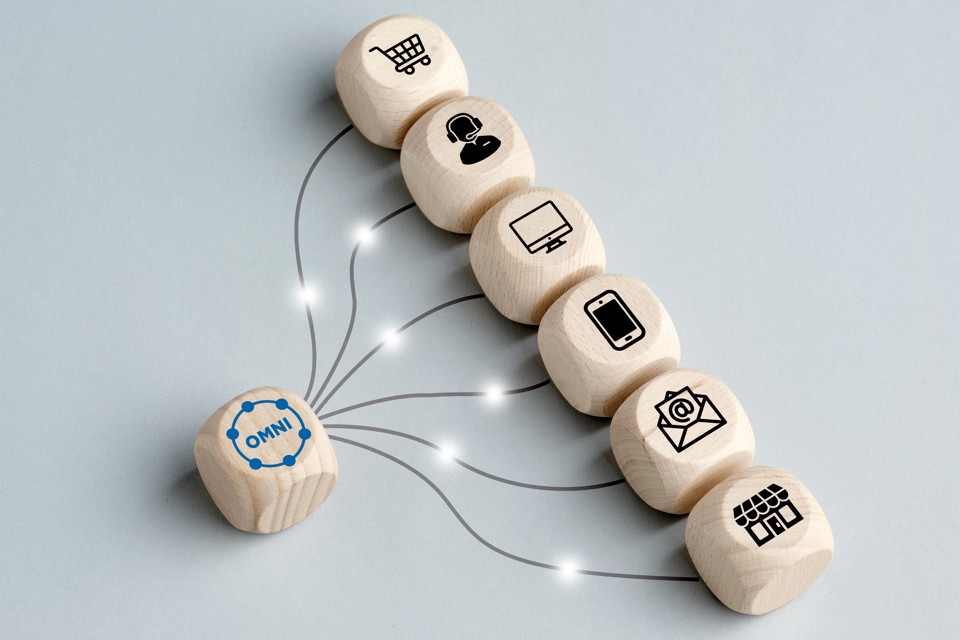Consumers are demanding more from their car buying journey than ever before. The rise of online purchasing, accelerated by COVID-19, has prompted many buyers to look to the web to do their initial research, check their eligibility, apply and get quotes for finance, and obtain insurance.
But they still want to be able to complete the process in the showroom, where they can see and get a better feel for the vehicle.
That’s why dealerships need to ensure they are providing a full omnichannel model that enables the consumer to choose whichever medium they want to complete each part of the journey. The whole dynamic of car buying has changed in recent years. Gone are the days when the dealer told the consumer what they needed – now the process is being led by the customer.
The buyer’s number one requirement is convenience, according to Jana Jones, vice president of marketing and corporate communications at iVendi. They want to be able to do every step of the journey on their own terms – wherever and whenever they like, she says.
 “Today’s consumers expect transparency and immediacy. But, above all else, they are looking for convenience,” says Jones. “They want to be able to buy a vehicle on demand at a time that fits in with their agenda and lifestyle.” The increasing use of digital channels is evidenced by the fact that iVendi provided consumers with more than 18 billion online quotations from more than 60 lenders in 2022.
“Today’s consumers expect transparency and immediacy. But, above all else, they are looking for convenience,” says Jones. “They want to be able to buy a vehicle on demand at a time that fits in with their agenda and lifestyle.” The increasing use of digital channels is evidenced by the fact that iVendi provided consumers with more than 18 billion online quotations from more than 60 lenders in 2022.
Buyers using its technology also carried out around 126,000 finance eligibility checks. According to iVendi research, consumers are now completing 80% of their purchasing journey online and the balance in the dealership – the same as it was pre-pandemic. But that’s not to say the dealership part isn’t as important.
“Consumers want to do a lot of this groundwork and heavy-lifting online first,” says Jones.
“But, because a vehicle is a tangible and emotional purchase, when they get to the actual buying part of the journey, they want to go into the showroom to see and get a feel for it.”
This article first appeared in AM's
Running A Modern Dealership digital report.
Go to the report here to read this and other articles
in magazine format.
MORE KNOWLEDGEABLE CONSUMER BASE
Consumers are also becoming increasingly more savvy and knowledgeable about the product from the research they have done, says Marketing Delivery’s chief executive Jeremy Evans. That means they expect the showroom staff to have the same level of knowledge, if not more than them, he says.
“Consumers are doing their research online like never before,” says Evans. “They know what vehicle they want and the finance options they have available to them, so when they walk into a dealership, they are seeking confirmation of this.” But often there are still big deficiencies here, with Evans citing consumer email responses raising concerns that the sales staff didn’t know as much as they did about a product. Having that knowledge is key, particularly for electric vehicles (EVs) where the consumer will have researched everything from battery types to the vehicle’s range.
Evans added that there were also shortcomings in dealer management systems that handle enquiries. For example, he says that some systems don’t include the option for the consumer to select a hybrid or EV.
“There are still some big gaps in systems capabilities,” says Evans.
“That makes the customer journey much harder because the data collected doesn’t enable the dealer to correctly segment the communication and other information that needs to be sent to them.”
Anuj Monga, head of mobility aftermarket and digital retail research at Frost & Sullivan, agrees that there was a gap between increasing customer demand for omnichannel and the industry’s lack of options. He adds that his company’s research has found that only four global manufacturers currently provide end-to-end online retail, while most lack an online payment option to complete the car-buying journey. “In general, the majority of the OEMs that have some online presence are observed to work with third party service providers like sales aggregators or e-commerce platforms that facilitate these services,” says Monga.
 “This appears to be the template to follow in the transitory phase and, as the market acceptance increases, OEMs need to devise ways to internalise these capabilities to be able to control the buying process.”
“This appears to be the template to follow in the transitory phase and, as the market acceptance increases, OEMs need to devise ways to internalise these capabilities to be able to control the buying process.”
Another significant gap in the omnichannel journey is in viewing vehicles online. According to CitNOW’s research, 30% of prospective buyers cite 360-degree interior videos as the most valued visual aid when they are looking at a web listing, yet only 14% of the top AM100 retailers have such capabilities.
PERSONALISED STEPS
According to a Frost & Sullivan customer survey carried out at the pandemic’s peak in 2021, 67% of respondents said that they greatly valued the personalised steps of the digital purchase journey and suggested it’s a trigger to attracting them to the online channel.
Three-quarters also said that they’re likely to leverage the option to book a test drive online in their buying journey.
 Carol Fairchild, chief customer officer at CitNOW Group, says that understanding customers’ varied requirements and behaviours was key to offering the right approach for them. In this vein, she says that retailers need to be adaptable and communicate with the customer via multiple channels, thinking about how best to reach them both inside and outside of working hours.
Carol Fairchild, chief customer officer at CitNOW Group, says that understanding customers’ varied requirements and behaviours was key to offering the right approach for them. In this vein, she says that retailers need to be adaptable and communicate with the customer via multiple channels, thinking about how best to reach them both inside and outside of working hours.
“The increasing adoption of the agency model will inevitably change the dynamic between manufacturers, retailers and customers,” says Fairchild. “However, customers simply expect a seamless journey from enquiry to sales and aftersales, regardless of who is taking the lead in the background. It’s crucial for technology to integrate to make the process seamless for the customer, retailer and OEM.”
The communication channel is also important. CitNOW’s research found that two-thirds of customers expect a dealership to respond to them using the same method of communication as they did.
Sally Foote, managing director of carwow, says that the industry needs to recognise the customer’s desire to shop using an omnichannel approach. That’s reflected by the divided attitudes towards buying online, she adds. “While the majority of consumers (60%) told us they would consider buying a car fully online, the vast majority – two-thirds – have concerns about doing so,” says Foote.
 “Those concerns are wanting to test drive the car before buying, seeing the car in person and being able to get their money back should they change their mind.”
“Those concerns are wanting to test drive the car before buying, seeing the car in person and being able to get their money back should they change their mind.”
Jones says dealers need to empower consumers by providing a self-serve option that allows them carry out more of the buying journey themselves. They need to be able to do that both online and in the dealership, she says.
“It ticks all of the boxes, both for consumer and regulator,” adds Jones. “The consumer wants convenience, immediacy and everything to be available at their fingertips, as and when they want it. On the other hand, the regulator requires the retailer to ensure that their products are being introduced in the right way and that the consumer fully understands what those products are and has been given all the information they need to make an informed choice.”















Login to comment
Comments
No comments have been made yet.